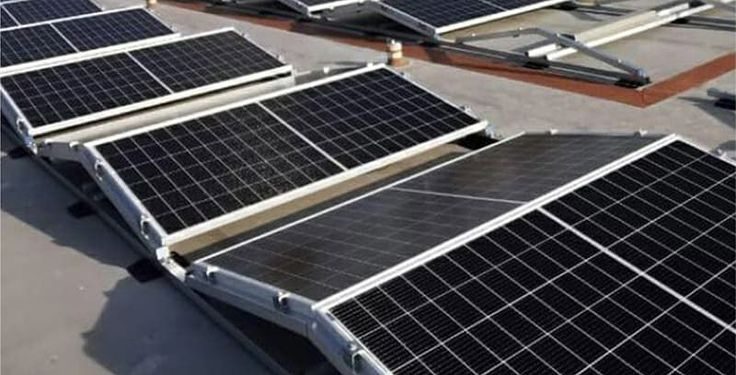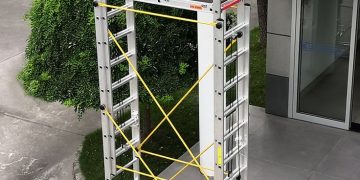Solar panels are the most visible component of any solar energy system, but they are only one part of the equation. Behind the scenes, a crucial piece of technology known as the solar inverter plays a vital role in converting the raw energy captured by the panels into usable electricity for homes and businesses. Understanding “What Is a Solar Inverter and How Does It Work?” is fundamental to grasping the full functionality of a solar power system. This article will demystify the solar inverter, explaining its function, different types, and why it’s indispensable for efficient solar energy utilization.
The Core Function: DC to AC Conversion
Solar panels (photovoltaic, or PV, panels) generate Direct Current (DC) electricity when exposed to sunlight. DC power flows in one direction and is suitable for charging batteries or powering certain DC appliances. However, most modern homes and businesses, as well as the utility grid, operate on Alternating Current (AC) electricity. AC power periodically reverses direction, making it suitable for long-distance transmission and powering the vast majority of electrical devices we use daily.
This is where the solar inverter comes in. Its primary and most critical function is to convert the DC electricity produced by the solar panels into usable AC electricity. Without an inverter, the electricity generated by solar panels would be largely incompatible with standard electrical systems and appliances.
How a Solar Inverter Works: The Conversion Process
The conversion process within a solar inverter involves several key steps:
- DC Input: DC electricity flows from the solar panels into the inverter.
- Inversion: Inside the inverter, electronic components rapidly switch the direction of the DC current, creating an alternating waveform. This process involves complex algorithms to ensure the AC output matches the frequency and voltage requirements of the electrical grid (e.g., 50 Hz/230V in the UK, 60 Hz/120V in the U.S.).
- Synchronization (for Grid-Tied Systems): For systems connected to the utility grid, the inverter must precisely synchronize its AC output with the grid’s voltage and frequency. This ensures that the solar electricity seamlessly integrates with the existing power supply, preventing disruptions and allowing excess power to be exported.
- Monitoring and Safety: Modern inverters also act as the “brain” of the solar system. They monitor the performance of the solar panels, detect faults (like shading or component failures), and provide data on energy production. They also incorporate safety features, such as automatically shutting down in the event of a grid outage (anti-islanding) to protect utility workers.
Types of Solar Inverters
There are several types of solar inverters, each with its own advantages and ideal applications:
- String Inverters: This is the most common type. Solar panels are wired together in “strings,” and each string connects to one central inverter.
- Pros: Cost-effective for large, unshaded arrays; simpler installation.
- Cons: If one panel in a string is shaded or underperforms, it can reduce the output of the entire string.
- Microinverters: Instead of one central inverter, each individual solar panel has its own small microinverter attached to it.
- Pros: Maximizes energy production from each panel (Module Level Power Electronics – MLPE); excellent for shaded or complex roofs; easier to monitor individual panel performance; increased system resilience.
- Cons: Higher upfront cost; more components on the roof.
- Power Optimizers: A hybrid solution. Optimizers are attached to individual panels (like microinverters) to optimize their DC output, but the DC power is then sent to a central string inverter for AC conversion.
- Pros: Benefits of MLPE (individual panel optimization and monitoring) at a potentially lower cost than microinverters; good for partially shaded systems.
- Cons: Still uses a central inverter, which can be a single point of failure.
- Hybrid Inverters: Designed for systems that incorporate battery storage. They can manage both solar power generation and battery charging/discharging, and seamlessly switch between grid-tied and off-grid modes.
- Pros: Essential for energy storage systems; provides backup power during outages.
- Cons: More complex and typically more expensive.
Why the Inverter is Indispensable
The solar inverter is far more than just a converter. It is the intelligent hub that ensures your solar system operates safely, efficiently, and effectively integrates with your property’s electrical needs and the utility grid. Its role in maximizing energy harvest, providing performance data, and safeguarding the system makes it an indispensable component for any successful solar installation.
Conclusion
The solar inverter is a critical, yet often overlooked, component of any solar energy system. By converting the raw DC power from solar panels into usable AC electricity, it enables businesses and homeowners to harness solar energy for their daily needs. Understanding the different types of inverters and their functionalities empowers consumers to make informed decisions, ensuring their solar investment delivers optimal performance and long-term benefits.








